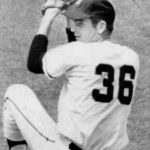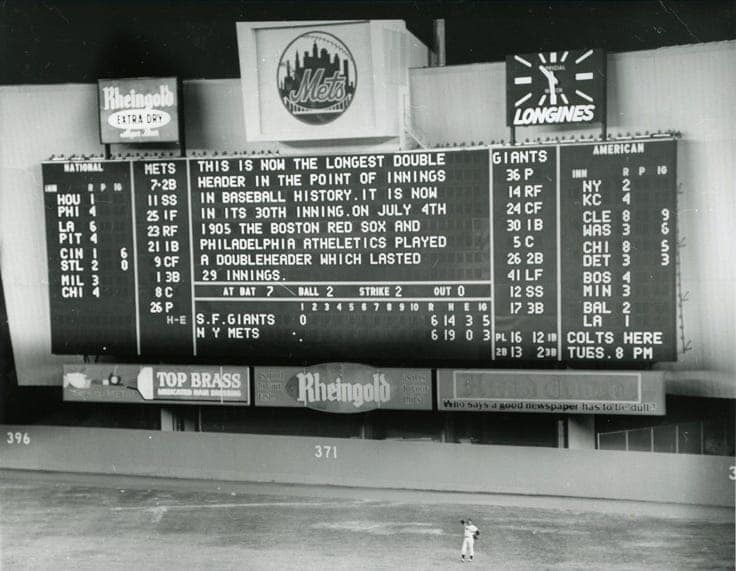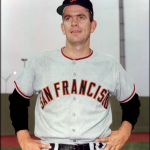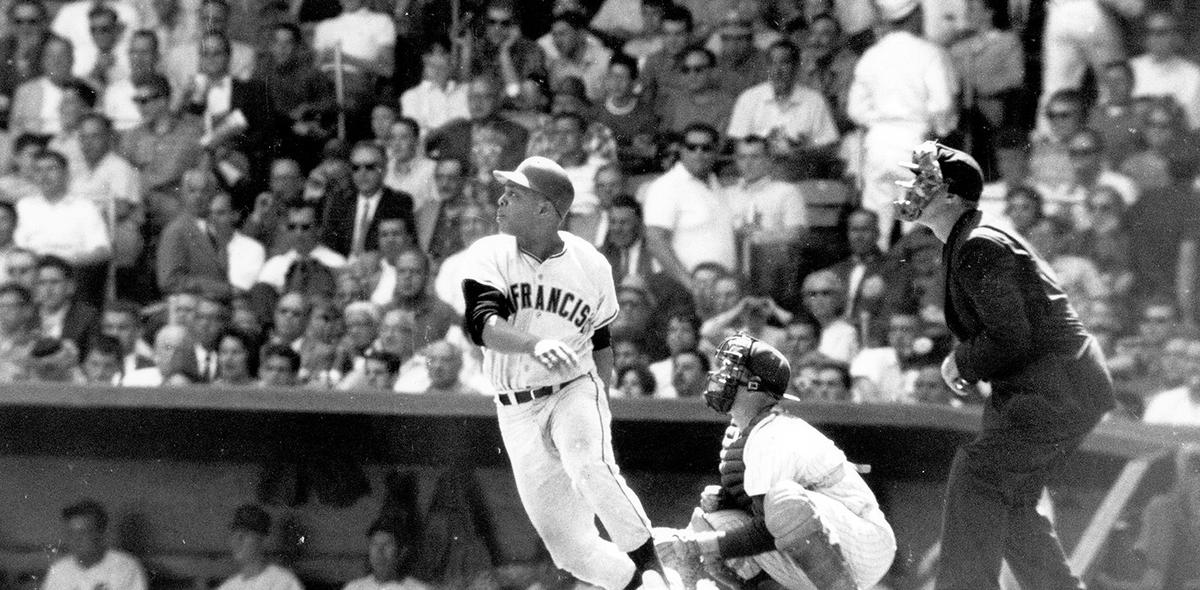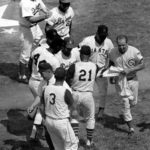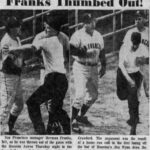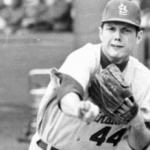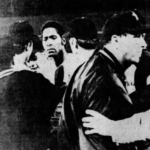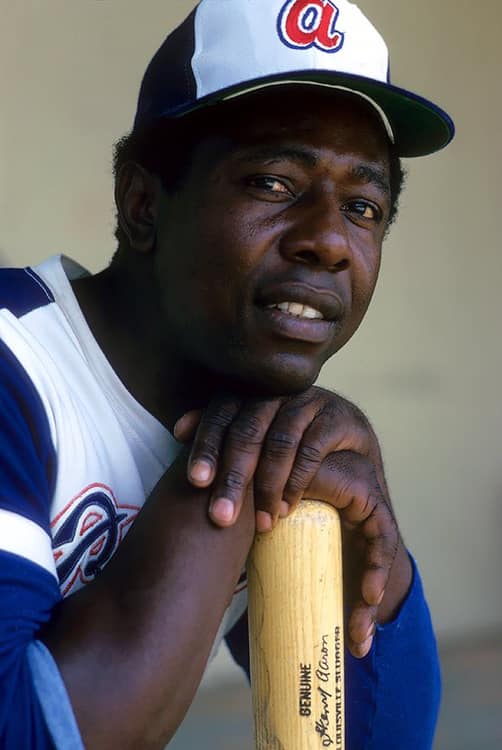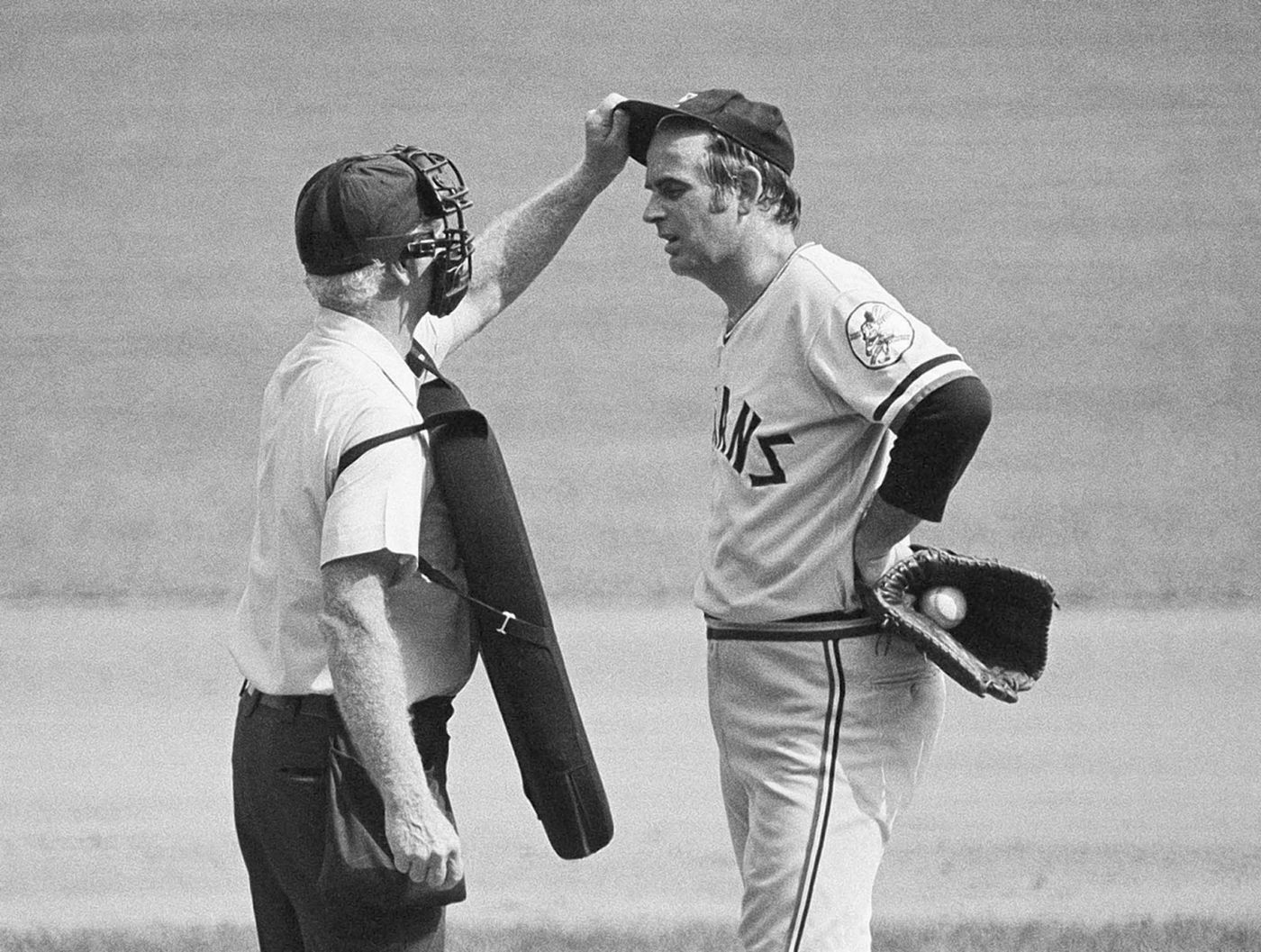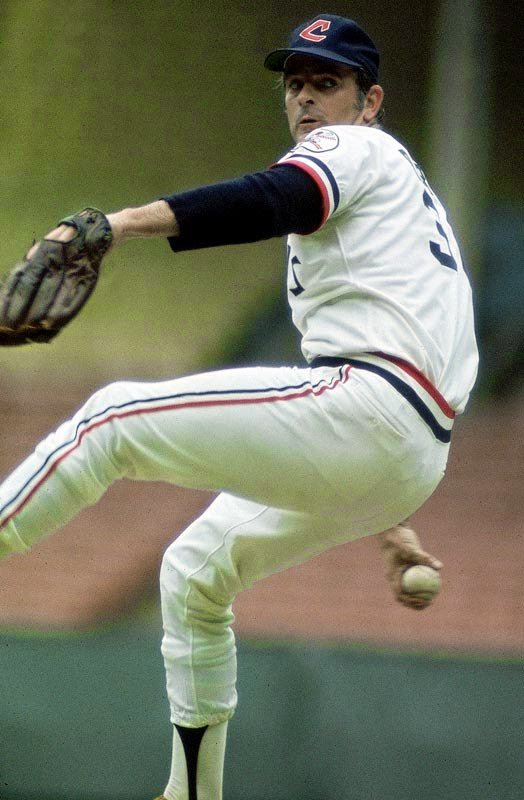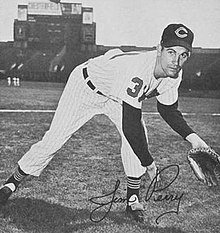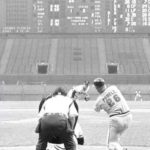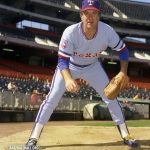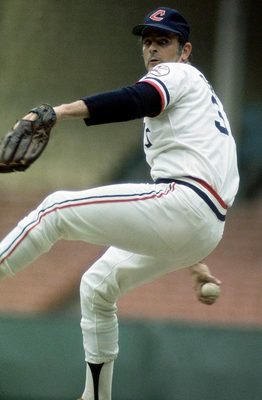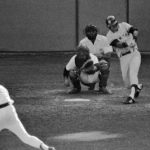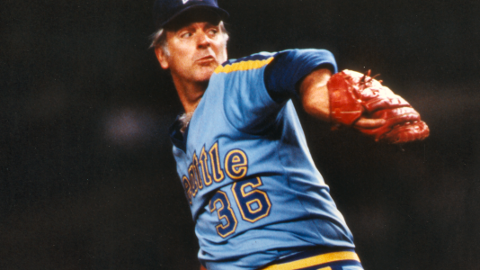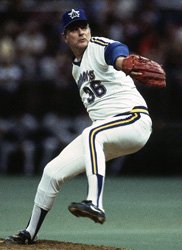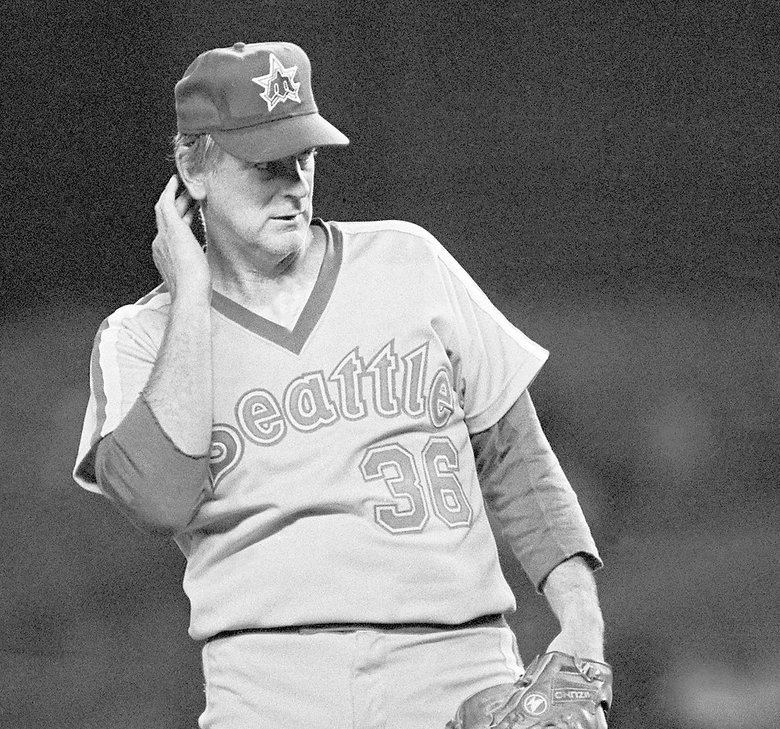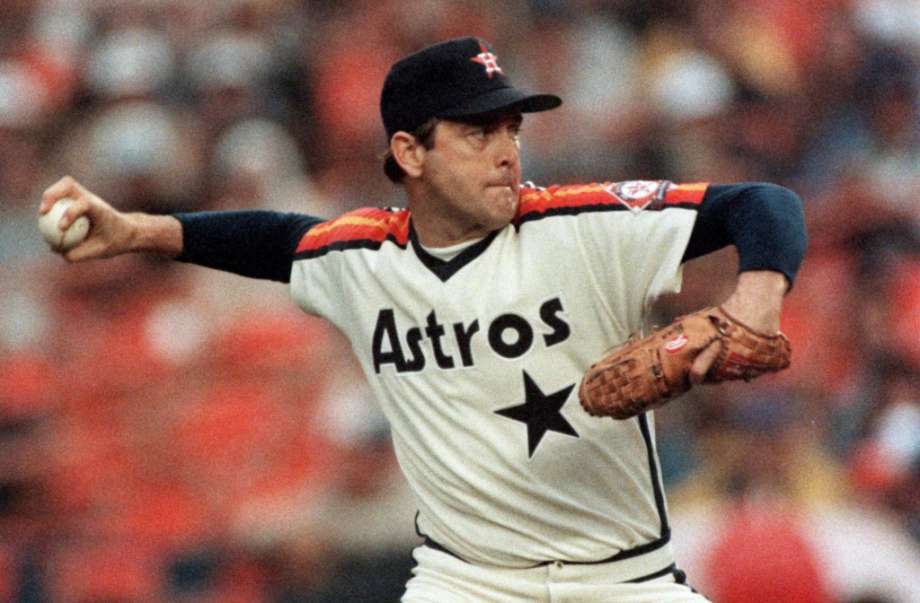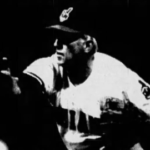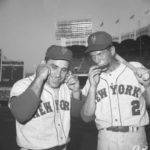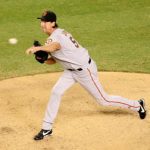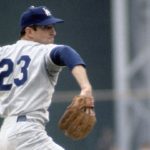Gaylord Perry
Position: Pitcher
Bats: Right • Throws: Right
6-4, 205lb (193cm, 92kg)
Born: September 15, 1938 in Williamston, NC
Death: December 1, 2022
High School: Williamston HS (Williamston, NC)
School: Campbell University (Buies Creek, NC)
Debut: April 14, 1962 (11,966th in major league history)
vs. CIN 2.2 IP, 5 H, 1 SO, 1 BB, 4 ER
Last Game: September 21, 1983
vs. CAL 5.0 IP, 10 H, 4 SO, 0 BB, 3 ER, L
Hall of Fame: Inducted as Player in 1991. (Voted by BBWAA on 342/443 ballots)
Full Name: Gaylord Jackson Perry
Relatives: Brother of Jim Perry
Nine Players Who Debuted in 1962
Willie Stargell
Bob Bailey
Ed Kranepool
Cookie Rojas
Tony Oliva
Gaylord Perry
Bob Veale
Dick Radatz
Tommy Harper
The Gaylord Perry Teammate Team
C: Tom Haller
1B: Willie McCovey
2B: Willie Randolph
3B: George Brett
SS: Ozzie Smith
LF: Dave Winfield
CF: Willie Mays
RF: Bobby Bonds
DH: Hal McRae
SP: Juan Marichal
SP: Fergie Jenkins
SP: Bert Blyleven
SP: Phil Niekro
SP: Vida Blue
RP: Rollie Fingers
RP: Dan Quisenberry
M: Frank Robinson
Notable Events and Chronology for Gaylord Perry
Intro Gaylord Perry
Gaylord Perry took his act to eight major league clubs, fooling batters with his sinking fastball. His ultimate weapon was his “phantom spitball” that he either threw or alluded to, unnerving enemy hitters, managers, and umpires. He was caught greasing the ball just once in his 22 seasons, but he admitted after his retirement that he threw the ball almost his entire career. Ironically, he refused to rely on the spitter the night he won his 300th game. Perry was the first pitcher to earn the Cy Young Award in both leagues, and he combined with brother Jim to form one of the finest sibling pitching duos in history.
Biography
Gaylord Jackson Perry (born September 15, 1938 in Williamston, North Carolina) is a former right-handed pitcher in Major League Baseball. Elected to the National Baseball Hall of Fame and Museum in 1991, Perry win-loss record 314 games over a 22-year career starting in 1962.
Perry, a five-time Major League Baseball All-Star Game, was the first pitcher to win the Cy Young Award in each league, winning it in the American League in 1972 with the Cleveland Indians and in the National League in 1978 with the San Diego Padres. He is also distinguished, along with his brother Jim Perry (baseball), for being the second-winningest brother combination in baseball history–second only to the knuckleballing Niekro brothers, Phil Niekro and Joe Niekro. While pitching for the Seattle Mariners in 1982, Perry became the fifteenth member of the 300 win club.
Despite Perry’s notoriety for doctoring baseballs (throwing a spitball), and perhaps even more so for making batters think he was throwing them on a regular basis – he even went so far as to title his 1974 autobiography Me and the Spitter – he was not ejected for the illegal practice until August 23, 1982, in his 21st season in the majors.
Like most pitchers, Perry was not renowned for his hitting ability, and in his sophomore season of 1963, he is said to have joked, “They’ll put a man on the moon before I hit a home run.” Other variants on the story say that someone else said it about him, but either way, on July 20 1969, just minutes after the Apollo 11 spacecraft carrying Neil Armstrong and Buzz Aldrin landed on the moon, Perry hit the first home run of his career.
Gaylord Perry was named after a close friend of his father’s, who died while having his teeth pulled.
Pitching style
Perry claims he was taught the spitball in 1964 by pitcher Bob Shaw (baseball). Perry had a reputation throughout his career for doctoring baseballs, and was inspected on the mound by umpires and monitored closely by opposing teams. On August 20, 1982, he was ejected from a game against the Boston Red Sox for doctoring the ball, and given a 10-day suspension.
Perry reportedly approached the makers of Vaseline about endorsing the product and was allegedly rebuffed with a one-line postcard reading, “We soothe babies’ backsides, not baseballs.” Former Manager Gene Mauch famously quipped “He should be in the Hall of Fame with a tube of K-Y Jelly attached to his plaque.”
Gene Tenace, who caught Gaylord Perry when they played for the San Diego Padres, said: “I can remember a couple of occasions when I couldn’t throw the ball back to him because it was so greasy that it slipped out of my hands. I just walked out to the mound and flipped the ball back to him.”
Minor leagues
Perry was signed by the San Francisco Giants on June 3 1958 for $90,000, which was a big contract at the time. He spent 1958 with the St. Cloud, Minnesota team in Class A Northern League (baseball), compiling a 9-5 record and a 2.39 ERA. In 1959 he was promoted to the Class AA Corpus Christi Giants, where he posted a less impressive 10-11 record and 4.05 ERA. He remained with the team as they became the Rio Grande Valley Giants in 1960, and an improved ERA of 2.82 earned him a promotion to the Class AAA Tacoma Rainiers for the 1961 season. At Tacoma, he lead the Pacific Coast League in wins and inning pitched in 1961.
He had a brief call-up to the Major Leagues in 1962, making his debut on April 14 against the Cincinnati Reds. He appeared in 13 games in 1962, but had a high 5.23 ERA and was sent back down to Tacoma for the remainder of the year.
At Candlestick Park on September 17, 1968, two days after his 30th birthday, Perry, pitched a 1-0 no-hitter over the St. Louis Cardinals and Bob Gibson. The run came on a first-inning home run by light-hitting Ron Hunt—the second of the only two he would hit the entire season. The very next day, the Cardinals returned the favor on the Giants on a 2-0 no-hitter by Ray Washburn—the first time in Major League history that back-to-back no-hitters had been pitched in the same series. Jersey Retired by San Francisco Giants; : Gaylord Perry: P, 1962–71
Cleveland Indians (1972-75)
Before the 1972 season, the Giants traded the then 32-year-old Perry and shortstop Frank Duffy (baseball) for 28-year-old flamethrower Sam McDowell. After that trade Perry went on to win 180 more games in his career while McDowell won only 24 more. Perry went 24-16 in 1972 with a 1.92 ERA and 1 save, winning his first Cy Young award. He stood as the only Cy Young winner for Cleveland until 2007 (CC Sabathia). Perry continued as Cleveland’s staff ace until 1975. He went 70-57 during his time in Cleveland, but the team never finished above 4th place. Perry accounted for 39% of all Cleveland wins during his tenure. Tensions between him and player-manager Frank Robinson led to Perry’s trade to Texas in June 1975. Gaylord Perry remained as Cleveland’s last 20-game winner (21 wins in 1974), until Cliff Lee in 2008.
Texas Rangers (1975-77)
On June 13, 1975, at the start of a three-game series with the Texas Rangers (baseball), the Indians traded Perry to the Rangers in exchange for pitchers Jim Bibby, Jackie Brown (baseball), and Rick Waits. Perry would win nearly 80 more games in his career than the three combined. With the Rangers, Perry formed a one-two punch with Fergie Jenkins, with Perry earning 12 wins, and Jenkins 11, during the remainder of 1975. However, the Rangers, who had finished 2nd in the AL West in 1974, slipped to 3rd place that year.
The next year, with Jenkins moving to Boston, the 37-year-old Perry became the staff ace, winning 15 games against 14 defeats. The Rangers, however, slipped to 4th place in the AL West. But then, in 1977, the Rangers surged to 2nd place in the AL West, winning 94 games, a total that the franchise would not surpass until 1999. Perry again won 15 games, this time against only 12 defeats, in a rotation that included double-digit winners Doyle Alexander, Bert Blyleven, and Dock Ellis.
San Diego Padres (1978-79)
Before the 1978 season San Diego acquired Perry from Texas in exchange for middle reliever Dave Tomlin and $125,000. The 39-year old Perry wound up winning the Cy Young Award going 21-6 for San Diego while the 29-year-old Tomlin never pitched for Texas and pitched barely 150 innings the rest of his career. Perry’s 21 wins in 1978 accounted for 25% of the club’s victories all year long, and he became the first pitcher to win Cy Young awards in both leagues. In this season he became the third pitcher to strike out 3,000 batters, accomplishing the feat two weeks after his 40th birthday.
In 1979, Perry posted a 4.05 ERA and an 12-11 record before quitting the team on September 5, saying he would retire unless the club traded him back to Texas. The Padres traded Perry to the Texas Rangers (baseball) on February 15 1980. Many Yankees players had complained about Perry during his stints with the Rangers, and the club even used a special camera team to monitor his movements during one of his starts at Yankee Stadium. Perry finished the season with a 4-4 record for the Yankees.
Atlanta Braves (1981)
Perry’s contract was up after the 1980 season and he signed a one-year, $300,000 contract with the Atlanta Braves. During the 1981 Major League Baseball strike 1981 season, Perry, the oldest player at the time in Major League baseball, started 23 games (150.7 innings) and had a 8-9 record. and won his 300th game on May 6 1982, the first pitcher to win 300 since Early Wynn did so in 1963. On August 20 he was ejected from a game against the Boston Red Sox for doctoring the ball, and given a 10-day suspension. It was the second time Perry had been ejected in his entire career, and it was his first ejection for ball doctoring. In August, Perry became the third pitcher in history to record 3,500 strikeouts. In the final months of the season, Perry experimented with a submarine delivery for the first time in his career and took a no-hitter into the eighth inning against the first-place Baltimore Orioles on August 19.
In 1983, he became the third pitcher in the same year to surpass longtime strikeout king Walter Johnson’s record of 3,509 strikeouts. Steve Carlton and Nolan Ryan were the others.
He announced his retirement on September 23 1983.
Post-playing career
Perry retired in 1983 after pitching for eight teams (the San Francisco Giants, Cleveland Indians, Texas Rangers , San Diego Padres, New York Yankees, Atlanta Braves, Seattle Mariners and Kansas City Royals). It was during his time with Seattle that he kicked noted The Second City actor Jim Zulevic out of a late night party in a Chicago hotel.
Perry retired to his farm in Martin County, North Carolina, North Carolina farm where he grew tobacco and peanuts, but had to file for bankruptcy in 1986. He briefly worked for Fiesta Foods as a sales manager, and later in the year Limestone College in Gaffney, South Carolina chose Perry to be the College’s first baseball coach. Perry was there until 1991 when he retired.
Despite his admission of illegal pitches he was elected to the Hall of Fame in 1991 and was nominated as a finalist for the Major League Baseball All-Century Team. In 1999 The Sporting News ranked him 97th on their list of the 100 Greatest Baseball Players.
Perry supported the Republican Party (United States), campaigned for Jesse Helms and contemplated a bid for Congress himself in 1986.
On July 23 2005 the San Francisco Giants retired Perry’s uniform number 36.
Perry was inducted into the Bay Area Sports Hall of Fame on March 9, 2009.
Legacy
Due the number of Games Perry lost (265) and lack of postseason glory, the Washington Post called Perry’s bid for the Hall of Fame “dubious”. Bill James lists Perry as having the 10th best career of any right-handed starting pitcher, and the 50th greatest player at any position. In 1999, The Sporting News placed Perry at number 97 on its list of “The Sporting News list of Baseball’s Greatest Players.” One eerie thing about Perry’s career is his similarity to Phil Niekro’s: each had a special pitch they used almost exclusively (Niekro’s was a knuckleball), each had a brother who were good, but not as good as their Hall of Fame brothers (Phil’s brother was Joe Niekro), each had a short stint with the Yankees at the end of their career (Niekro’s was in 1984 to Perry’s 1980), each played at the same time period, born within one year of each other, and are 4 wins apart (Perry has 314; Niekro has 318), and each of the Hall of Famers has a nephew who is a pro athlete, who is a son to the lesser brother. Gaylord’s nephew Chris is a pro golfer, while Phil’s nephew Lance is a pitcher.
Pitching statistics
Perry is one of five pitchers to win the Cy Young Award in both the American and National League (Pedro Martínez, Roger Clemens, & Randy Johnson being the others). He held the record for most consecutive 15-win seasons since 1900 with 13 (1966-1978) and was 2nd all-time to Cy Young, who had 15 (1891-1905). Greg Maddux surpassed both men, with 17 in a row (1988-2004).
Personal life
Perry’s wife, Blanch Manning Perry, died on September 11 1987 when another car ran a stop sign and hit her car broadside on U.S. Route 27 in Lake Wales, Florida, Florida.
His nephew, Chris Perry (golfer), is a professional golfer who has won a tournament on the PGA Tour.
@ET-DC@eyJkeW5hbWljIjp0cnVlLCJjb250ZW50IjoicG9zdF90YWdzIiwic2V0dGluZ3MiOnsiYmVmb3JlIjoiTGVhcm4gTW9yZSBhYm91dCB0aGUgdGVhbXMsIHBsYXllcnMsIGJhbGwgcGFya3MgYW5kIGV2ZW50cyB0aGF0IGhhcHBlbmVkIG9uIHRoaXMgZGF0ZSBpbiBoaXN0b3J5IC0gLSAtIC0gLSAtIC0gIiwiYWZ0ZXIiOiIiLCJsaW5rX3RvX3Rlcm1fcGFnZSI6Im9uIiwic2VwYXJhdG9yIjoiIHwgIiwiY2F0ZWdvcnlfdHlwZSI6InBvc3RfdGFnIn19@
Linked: Frank Duffy and Sam McDowell were involved in the 1971 Winter Meeting deal that sent Perry to the Indians… Jim Bibby and Rick Waits were part of the deal that sent Perry to the Rangers… Jim Perry, winner of more than 200 games. Gaylord and Jim Perry, and Phil Niekro and Joe Niekro are the only brothers to each win more than 200 games in the majors… Rod Carew and Fergie Jenkins were inducted to the Hall of Fame the same year as Perry (1991).
Best Season, 1972
Winning his first Cy Young award, Perry led the NL in wins (24), and complete games (29). He was second to Luis Tiant by an eyelash in ERA (1.92), and only knuckleballer Wilbur Wood threw more innings than Perry’s 342 2/3. The voting for the award was close – Perry edging Wood 64-58.
Awards and Honors
1972 AL Cy Young
1978 NL Cy Young
No-Hit Fame
9/17/1968: For SF (N) vs. STL (N), 1-0 at SF. 9 innings pitched.
Factoid
On May 6, 1982, Gaylord Perry became the 15th pitcher to win 300 games. Pitching in Seattle’s Kingdome, Perry defeated the Yankees, 7–3. He gave up nine hits and six walks in becoming the first pitcher to reach the 300-win plateau since Early Wynn in 1963.
Where He Played: Starting pitcher, almost exclusively from 1966 on. His first four seasons (1962-1965), Perry made 79 relief appearances. In 1966, Perry emerged from the shadow of Juan Marichal, winning 20 of his first 22 decisions. He limped to the finish line however, going 1-6 to end the season. Neither Marichal or Perry fared well enough to garner even one vote in the Cy Young race, as Sandy Koufax (27-9, 1.73) was a unanimous choice.
Post-Season Notes
Perry started and won the first game of the ’71 playoffs, beating the Pirates 5-4 thanks to homers from Willie McCovey and Tito Fuentes. In Game Four he was unable to hold 1-0 and 5-2 leads and was knocked out in the sixth inning. The Bucs won the series in four games.
Feats: On September 17, 1968, Perry pitched a no-hitter, defeating Bob Gibson and the Cardinals, 1-0. Ron Hunt’s homer provided the margin… According to Elias Sports Bureau’s Rob Tracy, only four pitchers have pitched four straight shutouts in the 40-year expansion era: Cory Lidle (four straight in 2002), Orel Hershiser (five straight in 1988), Luis Tiant (four straight in 1972) and Gaylord Perry (four straight in 1970)… On April 17, 1974, Perry hurled 15 innings against Milwaukee and left the game tied 4-4. The Brewers beat Perry’s Indians in the 16th.
Milestones
On October 1, 1978, when Perry recorded his 3,000th strikeout (the victim was Joe Simpson of the Dodgers), he pitched 10 innings in a game the Padres won, 4-3. Also appearing in that game were future Hall of Famers Rollie Fingers (who relieved Perry and won the game), and Dodger starting pitcher Don Sutton.
Transactions
Signed as an amateur free agent by San Francisco Giants (June 3, 1958); Traded by San Francisco Giants with Frank Duffy to Cleveland Indians in exchange for Sam McDowell (November 29, 1971); Traded by Cleveland Indians to Texas Rangers in exchange for Jim Bibby, Jackie Brown, Rick Waits and $100000 (June 13, 1975); Traded by Texas Rangers to San Diego Padres in exchange for Dave Tomlin and $125000 (January 25, 1978); Traded by San Diego Padres with Tucker Ashford and Joe Carroll to Texas Rangers in exchange for Willie Montanez (February 15, 1980); Traded by Texas Rangers to New York Yankees in exchange for Ken Clay and a player to be named later (August 14, 1980); Texas Rangers received Marvin Thompson (October 1, 1980); Granted free agency (October 23, 1980); Signed by Atlanta Braves (January 12, 1981); Released by Atlanta Braves (October 5, 1981); Signed by Seattle Mariners (March 5, 1982); Released by Seattle Mariners (June 27, 1983); Signed by Kansas City Royals (July 6, 1983).
On January 25, 1978, the Texas Rangers sent Perry to San Diego for pitcher Dave Tomlin and $125,000. Some “experts” at the time chided the Pads for making the deal, citing Perry as over the hill at 38. Tomlin, a 28-year old reliever, never pitched for the Rangers. Perry went 21-6 with a 2.73 ERA to win the NL Cy Young award. He would win 62 games after leaving Texas.
Spit and Polish
From 1975 to 1977, two Hall of Fame right-handers, Jim Palmer and Gaylord Perry, faced off three times in dazzling fashion. On June 13, 1975, 36-year old Gaylord Perry, less than three years removed from his 1972 Cy Young award winning season, was traded from the Cleveland Indians to the Texas Rangers in a blockbuster deal. The Rangers sent three pitchers, Jim Bibby, Jackie Brown, Rick Waits AND $100,000 to the Indians for Perry’s services. Perry got off to a rocky start with the Rangers, going 7-6, but he was riding a four game winning streak into a Thursday night, August 21 matchup against Jim Palmer and the Orioles.
Palmer, who would win his second Cy Young Award in 1975 and finish sixth in the MVP voting, was looking for his 20th win that night. The Orioles were in second place in the American League East seven games behind the front running Red Sox. The Rangers were stuck in fourth. Each pitcher excelled over the first three innings. Perry faced one batter over the minimum, with Paul Blair getting picked off after a first inning single, and Ken Singleton being erased after a Jim Northrup double play. Palmer retired the first nine Rangers. Texas began the scoring when Cesar Tovar, who singled, stole second and advanced to third on Dave Duncan’s thowing error, was driven in by Jeff Burroughs for an unearned run. The Orioles answered in their fifth with Hall of Famer Brooks Robinson doubling to right and scoring on a Bobby Grich double.
The back and forth trading of single runs continued in the Rangers’ sixth, and the Orioles’ seventh, with Baltimore’s tally scoring on a Robinson single. That was all of the runs for quite some time. From the seventh inning until the twelfth when he departed, Jim Palmer faced 20 batters over six innings. Perry, keeping pace through the Orioles eleventh, gave up no more runs.
Ultimately, the game was decided by the heroics of another Hall of Famer. Brooks Robinson, who had already contributed to the first two Oriole runs, drove in the deciding run on a double to center off reliever Steve Foucault in the top of the twelfth and scored the fourth and last run when Elrod Hendricks singled to right. The game ended 4-2, with Palmer going 12 innings and giving up one unearned run, while striking out six. Perry, while giving up 13 hits, went 11 innings giving up two runs and also striking out six. Both pitchers ended up with no decisions.
A paltry crowd of 6,418 fans were sitting in Memorial Stadium for a Friday night game between the Rangers and Orioles on August 27, 1976. Once again, the O’s were in second place in the East, this time 11.5 games behind the Yankees. The Rangers were mired in fourth, 19 games in back of the division leading Royals. Perry, looking for win 13, was pitted against Palmer, already at 17 wins on his way to his third Cy Young Award. Al Bumbry scored for the Orioles in the bottom of the first and, for the rest of the game, goose eggs were put on the board, until the bottom of the ninth. Gaylord went eight innings in a complete game loss, walking one and striking out a season high 11 batters. Palmer, also in a complete game performance, went nine innings, walking zero and striking out ten. The 2:36 long contest saw both hurlers at the top of their games for the second time in a row against each other.
The last time Perry would face Palmer as a member of the Rangers came in a nationally televised Game of the Week on Saturday July 23, 1977. For the third year in a row, the Orioles were in second place, this time just ˝ game behind the Red Sox. Again the Rangers were in fourth, but closer, at eight games behind of the White Sox. This game was the pinnacle of the three confrontations between the future Hall of Famers. For nine innings, these legendary hurlers shut out their opposition. Perry, two months shy of his 39th birthday, pitched nine scoreless innings, striking out nine, while allowing four hits and three walks. Palmer did even better, going 11 innings striking out nine and walking zero. The game ended in the thirteenth inning, with Mike Hargrove singling in Bump Wills, who had led of the top of the inning with the only extra base hit of the game, a double to center. Again, a no decision was the result of a hard day’s work for the two starting pitchers.
Two future Hall of Famers, three outstanding matchups. In the three head to head duels between Jim Palmer and Gaylord Perry, their stats were:
………..IP….H….R….ER….BB….K
Perry……28…24….5…..5…..5…26
Palmer…..32…19….2…..1…..0…25
Perry’s ERA for these games was 1.60, but Palmer’s was a mesmerizing 0.28. Plus, Palmer walked ZERO batters over the equivalent of three-and-a-half games.
— Jeff Katz
Pine Tar Accomplice
The day that George Brett went ballistic after umpires waived off his game-winning homer against the Yankees, Perry was on the bench for the Royals. True to his reputation for bending the rules, Perry tried to hide the bat when the umpires came hunting for the pine tar evidence.
A Different Inning, A Different Jersey
In his 300th game victory with the M’s on May 6, 1982, Perry wore a different jersey each inning in order to sell them later as memorabilia. With this action, he proved to be years ahead of the trend that was later followed by Cal Ripken Jr. and Tony Gwynn in historic games.
Quotes From Perry
“I’d always have grease in at least two places, in case the umpires would ask me to wipe one off. I never wanted to be caught out there with anything though, it wouldn’t be professional.”
All-Star Selections
1966 NL
1970 NL
1972 AL
1974 AL
1979 NL
Replaced
A cast of misfit starters: Bobby Bolin, Ron Herbel, and Bob Hendley, who, in 1965, lost their jobs in the rotation.
Replaced By
Perry’s last job in the rotation was with the Royals in 1983. The next season, the Royals swept away the veterans (in addition to Perry, that included Larry Gura, Paul Splittorff, Steve Renko, and Vida Blue), and brought in talented arms attached to Mark Gubicza, Charlie Leibrandt, Mike Jones, and Danny Jackson.
Best Strength as a Player
Control. Perry walked more than 90 batters in a season just three times in his long career. And he got better with age – after the age of 35, Perry walked just 2.2 batters per nine innings.
Largest Weakness as a Player
Perry was a terrible hitter, batting .131 in more than 1,000 career at-bats. He did have some pop – he blasted six homers.
Other Resources & Links
View Gaylord Perry’s Page at the Baseball Hall of Fame (plaque, photos, videos).
View Player Info from the B-R Bullpen
View Player Bio from the SABR BioProject


